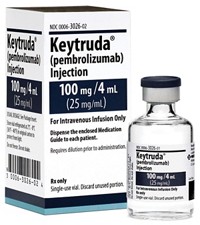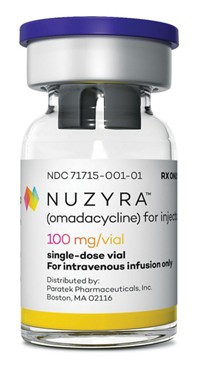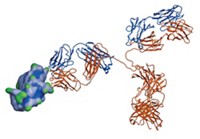Advertisement
Grab your lab coat. Let's get started
Welcome!
Welcome!
Create an account below to get 6 C&EN articles per month, receive newsletters and more - all free.
It seems this is your first time logging in online. Please enter the following information to continue.
As an ACS member you automatically get access to this site. All we need is few more details to create your reading experience.
Not you? Sign in with a different account.
Not you? Sign in with a different account.
ERROR 1
ERROR 1
ERROR 2
ERROR 2
ERROR 2
ERROR 2
ERROR 2
Password and Confirm password must match.
If you have an ACS member number, please enter it here so we can link this account to your membership. (optional)
ERROR 2
ACS values your privacy. By submitting your information, you are gaining access to C&EN and subscribing to our weekly newsletter. We use the information you provide to make your reading experience better, and we will never sell your data to third party members.
Programs
Celebrating ACS’s Heroes of Chemistry
4 industrial teams honored for their innovations in medicine and solar energy
by Linda Wang
October 20, 2018
| A version of this story appeared in
Volume 96, Issue 42
Behind every commercial product is a passionate team of scientists and engineers. These individuals are often the unsung heroes, working behind the scenes to create successful commercial products, from life-saving treatments to new materials that revolutionize the industry.
The American Chemical Society honored four teams of industrial chemical scientists, from AstraZeneca, DuPont, Pfizer, and Seattle Genetics, with its 2018 Heroes of Chemistry Award during the ACS national meeting in Boston in August. This award is ACS’s most prestigious honor for industrial chemists. Among ACS’s membership, more than 50% of members work in industry.
Here’s a look at the life-changing products being honored this year:
AstraZeneca: Tagrisso (osimertinib)

Tagrisso (osimertinib) is a targeted drug approved for first-line treatment of patients with metastatic epidermal growth factor receptor (EGFR) mutation-positive non-small-cell lung cancer.


“About 60% of cases of patients with EGFR mutation-positive non-small-cell lung cancer develop resistance to the first-generation EGFR inhibitors,” says David Wilson, head of oncology chemistry at AstraZeneca. “We had an understanding of what was happening at a molecular level and how these mutations were driving resistance.”
Using structure-based design, the AstraZeneca team identified lead molecules targeted towards the resistant mutant. “We had some interesting molecules that delivered the profile we were looking for, but they lacked efficacy in cellular systems,” Wilson says. “To solve this problem, the medicinal chemistry team was inspired to reengineer the molecule into an irreversible inhibitor of mutant EGFR. This strategy was ultimately successful, paving the way to Tagrisso.”
“One molecule in particular started to look interesting and demonstrated the potential of being a quality clinical candidate,” says awardee Richard Ward, a principal scientist in computational chemistry at AstraZeneca. “However, it was not until summer 2013, when we observed clinical responses in patients in the first cohort, that we had confirmation that it was a special molecule.”
Wilson notes that the discovery and development of Tagrisso was particularly fast for a cancer drug. Tagrisso was synthesized in June 2011, first dosed in patients in March 2013, and received regulatory approval in November 2015.
The timing of Tagrisso’s approval could not have been better for Ivy Elkins, who in 2016 learned that her lung cancer had progressed, even on targeted therapies. “After I started Tagrisso, my remaining lung tumor shrank by about 50%. I have no side effects, and I’ve really been able to go about my normal life. I’m 52, and I have two teenage boys. I want to see my boys go to college, graduate, get married, have kids, everything.”
She says she is grateful for the team of researchers behind Tagrisso. “I want to emphasize how life changing these treatments can be for people like myself,” she says. “It’s taking a death sentence and making it a manageable chronic disease.”
DuPont: Solamet PV17x


DuPont’s development of Solamet PV17x, a lead-tellurium-oxide-enhanced metallization paste, was a game changer for the solar energy industry. Metallization pastes are used to create the electrical contacts on solar panels that convert energy from sunlight into electricity. The pastes typically contain silver, glass frit, and other ingredients.
Advertisement
“We wanted to make the solar cells more efficient. At the same time, there are all sorts of things that go along with that—reducing silver usage and making the paste more user friendly for our customers,” says awardee Brian Laughlin, a principal investigator at DuPont.
“This particular invention was a new glass frit composition,” says awardee Paul VerNooy, a senior principal investigator at DuPont. “The frit that was in the previous generations of paste was a conventional lead borosilicate glass. One of the goals was to take silica out, which would lower the viscosity of the glass as it melts. We tried lead tellurium, and right out of the gate it worked very, very well. That’s unusual for an experimental compound.”
The Solamet photovoltaic metallization pastes have made solar panels more energy efficient and cost effective than previous generations of solar panels.
“This new paste enabled our customers to tweak their solar cells so that they could take advantage of the good contact that this paste could give,” VerNooy says. “By having this new chemistry, our customers could change their process, put less phosphorus in the emitter, get higher voltages, and ultimately higher efficiencies. It created a step change in the industry.”
Laughlin describes the satisfaction he feels as an industrial scientist: “You get to actually see the fruits of your labor. I can drive down the street and see solar panels on the roofs of homes and know that what I did in the lab contributed to their efficiency.”
“I went into industrial chemistry because I wanted to make a difference,” VerNooy says. “It feels great to be able to contribute to the industry with this product, and we were able to move the entire industry forward.”
Pfizer: Inlyta (axitinib)



Inlyta (axitinib) is a small-molecule tyrosine kinase inhibitor used as a second-line treatment for advanced renal cell carcinoma. It works by inhibiting the vascular endothelial growth factor (VEGF) receptor, which inhibits angiogenesis, or the formation of new blood vessels feeding tumors.
“The team overcame a number of hurdles in both discovering the molecule and during development,” says Charlotte Allerton, head of medicine design at Pfizer. “The molecule targets all three of the VEGF receptor subtypes with exquisite selectivity over other protein kinases, which I think gives it its unique efficacy and safety profile.”
Awardee Robert Kania, senior director of cancer chemistry, says it took 13 years from the first compound that was made to the drug being approved. “We made 735 compounds leading up to Inlyta. Some of those could be made in days, some of those took weeks, and it took a big team of scientists to do that,” Kania says. “The realization of a big breakthrough came when we saw the imaging results come back from the clinic that showed tumors before and after dosing. To see the tumors shrink was a huge moment confirming Inlyta was actually working.”
Kania says they were so proud of their accomplishment that they had a graphic of the Inlyta structure bound to VEGF printed on T-shirts and jackets. “I still see one or two people wearing that from time to time in the lab; it’s a great reminder,” he says.
George Hall has benefited firsthand from Inlyta. Hall found out he had kidney cancer in 2010. He tried several different treatments, but the cancer returned in 2015. He started on a low dose of Inlyta. “The CT scans I’ve had show no growth and no new spots, so I’m really pleased that it seems to be keeping me stable.” Also, on the lower dose, his side effects have been minimal.
The winners
AstraZeneca
Sam Butterworth, Raymond Finlay, Richard Ward, and Michael Waring
DuPont
Alan Carroll, Ken Hang, Brian Laughlin, Kurt Mikeska, Carmine (Charlie) Torardi, and Paul VerNooy
Pfizer
Steve Bender, John Braganza, Anthony Campeta, Brian Chekal, Michael R. Collins, Stephan Cripps, Steven Guinness, Robert Kania, Michele McTigue, Cindy Palmer, Robert Singer, Jayaram Srirangam, Mike Varney, Shu Yu, and Scott Zook
Seattle Genetics
Timothy D. Bovee, Svetlana O. Doronina, Brian Mendelsohn, Peter Senter, Clay Siegall, and Brian Toki.
Hall has seven grandchildren, and he and his wife continue to travel. “Right now, I’m in really good shape. I don’t feel like I have a problem.”
Seattle Genetics: Adcetris (brentuximab vedotin)

Adcetris (brentuximab vedotin) is an antibody-drug conjugate used to treat advanced Hodgkin’s lymphoma.
Adcetris contains the highly potent synthetic drug monomethylauristatin E attached to a CD30-directed antibody through a dipeptide linker. CD30 is a protein found on classical Hodgkin’s lymphoma cells but not commonly found on healthy cells, making Adcetris a highly targeted drug with minimal side effects.
“The biggest turning point in Seattle Genetics’ history was when it looked like this molecule was going to evolve into a drug, which it eventually did,” says awardee Peter Senter, vice president of chemistry. “We went from a very small biotech company to one of the major biotech companies in the U.S.,” Senter says. “It had a gigantic impact on the company. We want to be able to get Adcetris into other indications and expand its utilization. We want to understand more about the mechanism by which it works, and we want to be able to find the perfect combination of Adcetris with other drugs to make tumors go away.”


Kaitlynn Johnson, 25, says Adcetris put her Hodgkin’s lymphoma in remission after she tried five different chemotherapies. “I was diagnosed with HL the summer before my senior year of high school. My doctors told me I was running out of options; my HL was very aggressive. Adcetris was what put me into remission. Then I was able to get a stem cell transplant.”
She says she is grateful to the scientists who developed Adcetris. “I hope they realize what an impact it has made on my life and others like me.”
Know chemistry heroes that ACS missed? Nominations for 2019 open on Nov. 1. Visit www.acs.org/heroes for more information.





Join the conversation
Contact the reporter
Submit a Letter to the Editor for publication
Engage with us on Twitter